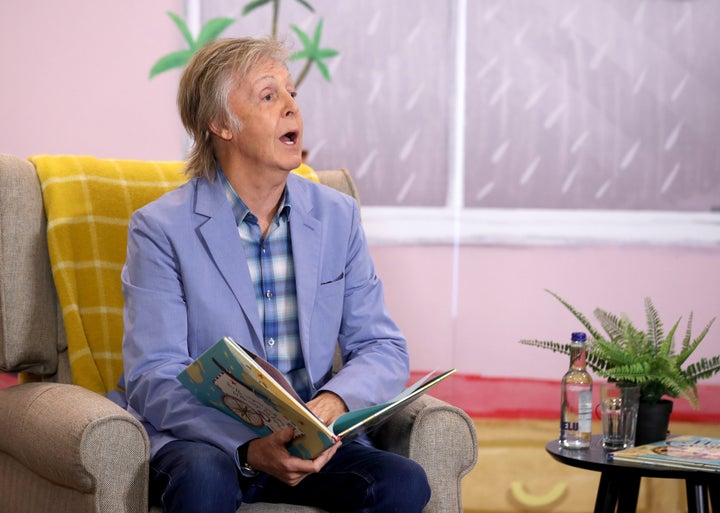
Sir Paul McCartney has claimed eye yoga helped improve his vision to the point where he can now read a newspaper without needing glasses.
The 78-year-old told Jessie Ware he discovered the routine during a trip to India in the late 2000s and now swears by it. Speaking on the Table Manners podcast, he said: “I learned off some yogi in India. He explained that your eyes are muscles. Your ears aren’t, so you can’t exercise your ears. But your eyes, you can.”
Eye yoga can be great for eye strain, especially with many of us having spent much of the past year staring at screens. Eye health charity Fight for Sight surveyed 2,000 people and found half used screens more since the pandemic struck and a third of those believed their eyesight had got worse.
Signs of computer eye strain, also known as visual fatigue or computer vision syndrome (CVS), include headaches; sore, tired or itchy eyes; difficulty focusing; watery or dry eyes; blurred or double vision; and increased sensitivity to light.
It’s estimated that half of computer users suffer with CVS – so if you’ve experienced one or more of the symptoms, you probably need to start resting your eyes throughout the day.
Here are some tips for keeping tired eyes at bay – including a 101 on eye yoga from the music legend himself.
1. Give eye yoga a go.
Look to the left, hold the position, repeat looking right. Look up, hold the position, repeat looking down. Repeat four times, closing your eyes and relaxing in between. Try this as a break for your eyes throughout the day.
Alternatively, try Sir Paul McCartney’s method. The musician likened the path your eyes take to a Union Jack flag: “So head still, and then you look up as far as you can – one, two, three – go back to the middle, then down, back to the middle. You do three lots of that then go to the left and the right. Now you’ve gone across, up and down, and sideways, you do the diagonals.”
2. Follow the 20:20:20 rule.
Essilor recommends people follow the 20:20:20 rule throughout the day to ensure they take regular breaks away from their screens. Every 20 minutes, look at something 20 feet away for 20 seconds. This relaxes the focusing muscle inside the eye.
3. Head to the opticians.
Opticians are able to provide eye care for those who’ve experienced eyesight changes or problems over the past year.
If you work with computer screens and can’t remember the last time you had an eye test, it might be time you booked one. This should be a priority for people who are experiencing any of the visual fatigue symptoms. You should be having an eye test every two years, minimum.
4. Get special lenses on your glasses.
If you’re looking at a screen all day, you can buy a special coating for your lenses that reduces the glare from ultraviolet and blue-violet light, associated with premature eye ageing. Ask your opticians for more information.
Contact lens wearers are advised to switch to glasses when using computers for long periods of time as they are more likely to end up with dry eyes.
5. Sort your lighting out.
Eye strain can be caused by excessive sunlight coming in through the window or by bright room lighting, according to Specsavers. If you can, partially close curtains or blinds to reduce the brightness from outside, reduce the lighting in the room, or avoid sitting under big, overhead fluorescent lights. The opticians advises using floor lamps instead.
6. Go outdoors.
It’s important to take a break from screens and go outside. Looking at objects in different distances and in natural light can be beneficial for your eyes and sight – so don’t eat lunch at your desk, get outside if you can.